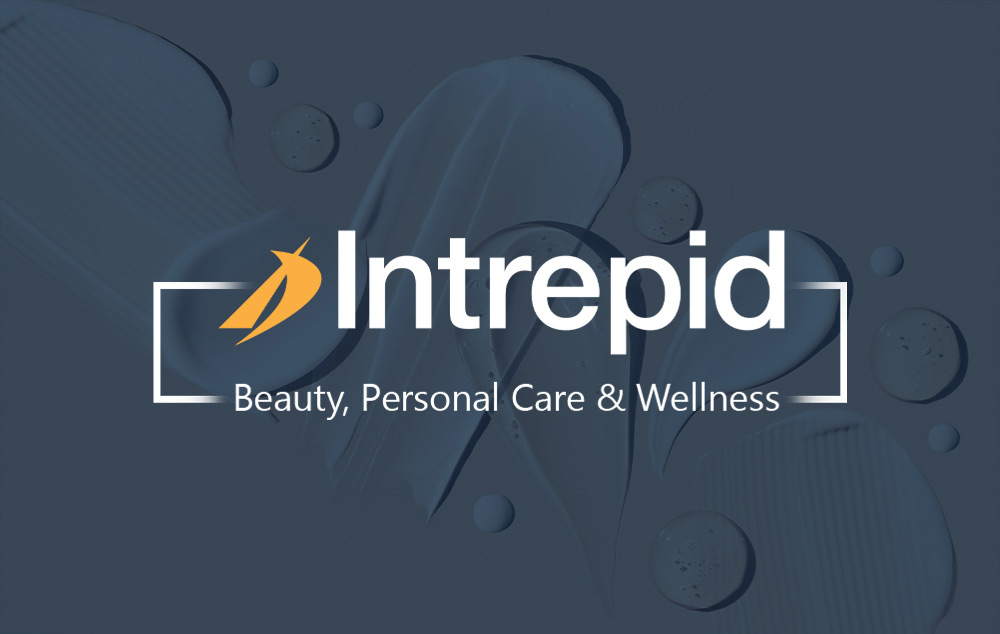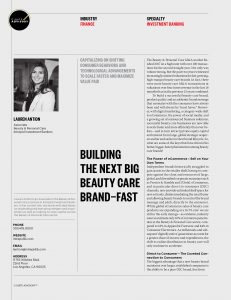Capitalizing on Shifting Consumer Behaviors and Technological Advancements to Scale Faster and Maximize Value Paid
The combination of many of these technology and consumer-driven market forces at work in the Beauty Care industry has allowed entrepreneurs to build large, successful brands in a matter of a couple of years—not a couple of decades.
The Beauty & Personal Care M&A market finished 2017 on a high note with over 100 transactions for the second straight year. Not only was volume strong, but the past two years witnessed increasingly outsized valuations for fast-growing, high-margin beauty care brands. In fact, there were more beauty care M&A transactions at valuations over four times revenue in the last 18 months than in the previous 15 years combined.
To build a successful beauty care brand, product quality and an authentic brand message that resonates with the consumer have always been and will always be “must haves.” However, with digital marketing, a category-wide shift to eCommerce, the power of social media, and a growing set of outsourced business solutions, successful beauty care businesses are now able to scale faster and more efficiently than ever before—and in turn attract private equity capital and interest from large, global strategic acquirers earlier and earlier in their brand lifecycle. So, what are some of the keys that have driven this better, bigger, faster phenomenon among beauty care brands?
The Power of eCommerce—Sell on Your Own Terms
Independent brands historically struggled to gain access to the retailer shelf, having to compete against the clout and resources of large, global, and diversified corporate mainstays such as Procter & Gamble and L’Oréal. eCommerce, and in particular direct-to-consumer (D2C) channels, now provide unlimited shelf space for new entrants, disintermediating the retail buyer and allowing beauty brands to control the brand message and pitch, directly to the consumer. While global eCommerce sales of beauty care products are expanding at a 16.7% rate,1 we are still in the early innings—as evidence, industry sources estimate only 10% eCommerce penetration in the Beauty & Personal Care sector, compared to 18% in Apparel & Footwear and 44% in Consumer Electronics. As Millennials and subsequent ‘digitally native’ generations account for a greater share of income and expenditures, the shift to online distribution in beauty care will only continue to accelerate.
Direct to Consumer—The Coveted Connection to Consumers
The biggest advantage that a new beauty brand maintains over larger, established companies is the ability to be a pure D2C brand, free from channel conflicts. A pure, ‘digitally native’ D2C brand benefits from:
Brand Control—Ability to tightly control brand messaging and develop a direct customer relationship that transcends traditional retail.
Customer Communication—Ability to have a direct conversation with the customer to drive repeat orders, establish a bond, upsell, receive feedback, resolve problems or simply say thank you.
Customer Intelligence—Ability to collect detailed data about individual customers, from purchase rates to product preferences to consumer demographics.
Consumer Insights—Ability to test anything and everything to a subset of consumers before rolling out to the entire customer base, from new products to new marketing campaigns to packaging changes.
Furthermore, once established, D2C brands can then leverage their direct consumer connection and loyal customer following to expand faster and with more certainty into additional distribution channels, including traditional retail. The market is rewarding early D2C movers, such as Dollar Shave Club, which employs a subscription-based distribution model for men’s grooming and lifestyle products. In 2017, Dollar Shave Club was acquired by Unilever for $1 billion, reflecting a five times multiple of revenue, after only five years of operation.
Social Media—Leveling the Playing Field
Social media has shifted the power and influence of how beauty brands and products are perceived, away from the multi-million advertising budgets of global consumer conglomerates, and into the hands of consumers, influencers, and beauty brands that are adept at effectively integrating and managing social platforms. Previously, brick and mortar retailers served as the primary brand curators and high-priced Madison Avenue advertising campaigns served as the mechanism to deliver brand messaging and awareness. Today, positive online customer reviews, authentic Instagram followers, loyal Facebook fans and social influencers have supplanted shelf space and advertising as the primary source of verification and acceptance for brand credibility, product efficacy, and quality. Furthermore, successful social media strategies can create authentic bonds with consumers who truly want to be a part of the brand, all at a fraction of the cost of a traditional branded consumer advertising campaign.
The impact of social media is most readily observed in the color cosmetics category, where online influencers have built social empires with tens of millions of followers. With 25 million followers, Huda Kattan ranks as one of the top beauty influencers in the world, having been named one of Forbes’ “Top 2017 Influencers in Beauty” and TIME’s “Most Influential People On The Internet.” Huda Beauty, launched in 2013, is one of the fastest growing influencer-driven color cosmetics brands, with an estimated $200 million in sales, and recently received a minority investment from TSG Consumer Partners. As a reference point, Huda’s 25 million followers is 7 million more than MAC Cosmetics and 18 million more than Maybelline. Too Faced Cosmetics, a social media darling with more than 10 million Instagram followers, sold to Estée Lauder for a reported $1.45 billion, representing a multiple of over five times revenue and over 20 times EBITDA (earnings before interest, taxes, depreciation, and amortization), the largest acquisition in Estée Lauder’s history.
Ingredient Transparency—Tell It How It Is
The Beauty & Personal Care industry is undergoing a long-term societal shift to natural and better-for-you brands as consumers become increasingly conscious about the role of beauty and personal care products in health and wellness. Following in the footsteps of the food industry and empowered by the internet and social media, consumers are demanding simpler, transparent, and “less-processed” beauty and personal care products, with comprehensible ingredients, free of chemicals and synthetics. As a result, the natural personal care market is growing 2.5 times faster than the overall Beauty & Personal Care industry.
As a consequence, natural and better-for-you brands such as Native deodorant have expanded rapidly, in part on the tailwinds of the natural and product transparency trends, in turn attracting early and aggressive interest from both private equity groups and strategic acquirers. Native, a recent client of ours, which was acquired by Procter & Gamble in 2017, joined a long list of recently acquired natural beauty and personal care brands, including Schmidt’s, Snowberry, MyChelle, Andalou Naturals, Mineral Fusion, and Indie Lee.
Building It Fast—2 Is the New 20
The combination of many of these technology and consumer-driven market forces at work in the beauty care industry has allowed entrepreneurs to build large, successful brands in a matter of a couple of years—not a couple of decades. These brands, in turn, are attracting investor capital and strategic buyer interest in many cases before their third birthday. Recent early-stage beauty care private equity investments include L Catterton’s investments in Kopari Beauty and TULA, Main Post Partners’ investment in Milk Makeup, and VMG’s investment in Drunk Elephant. Each of these deals involved top-tier branded consumer private equity groups investing in beauty brands founded less than three years ago.
Perhaps even more notable, Moiz Ali, Founder of Native, successfully capitalized on many of the trends highlighted in this article—a 100% D2C eCommerce brand, a successful social media and digital-driven customer acquisition strategy, and a powerful brand story based on product quality and ingredient transparency. As a result, Native built one of the fastest growing brands in the deodorant industry, a powerful data-driven D2C distribution platform, and most importantly, a rapidly expanding base of passionate and loyal users—culminating in a highly successful sale to Procter & Gamble—all in less than two years.
1 Technavio Global Online Beauty and Personal Care Sales Compound Annual Growth Rate 2016 to 2020.
Sources: Euromonitor (eCommerce penetration); Pew Research; Marketplace Pulse; Instagram; Intrepid Proprietary Beauty & Personal Care Transaction Database; Persistence Market Research (expected natural personal care growth 2016 to 2024); Technavio: Global Online Beauty and Personal Care Market 2016 to 2020 Report.

